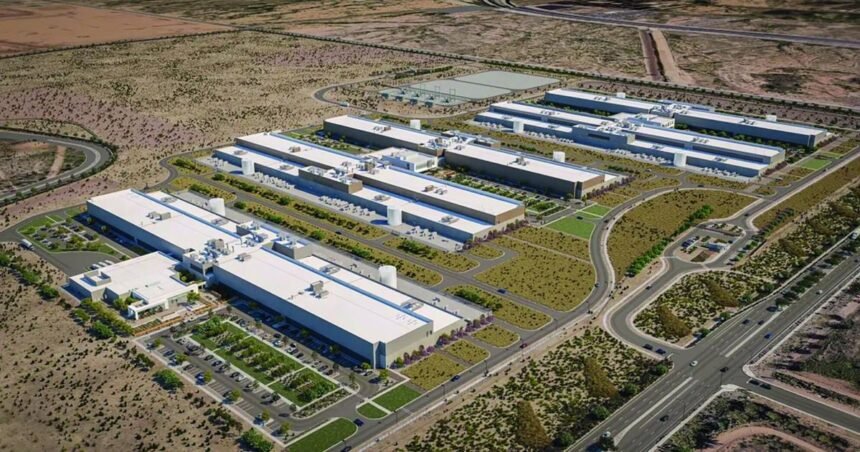Phoenix is moving quickly to approve new zoning regulations for data centers as their explosive growth through the Valley and across the country continues.
The regulations aim to cover not only their location but also how they look and how they consume vast amounts of electrical power and water.
The city Planning and Development Department has already submitted a recommendation to the Planning Commission for its approval of the new regulations at its monthly meeting June 5.
Prior to that, village planning committees are being briefed on the measure and also could be giving their recommendation to the Planning Commission, which will then submit its own recommendation to City Council for approval.
According to the city staff report to the Planning Commission, “The proposal will guide data center development away from cores, centers and corridors, where mixed-use, walkable communities are envisioned and will guide data centers to blend with the surrounding environment while limiting negative impacts to existing communities.”
Staff said the proposal is consisted with the city’s General Plan, the 10-year document guiding future development.
Data centers house a large collection of technological equipment designed to store, process and manage vast amounts of digital information.
They also consume vast amounts of land with facilities that produce relatively few jobs and eat up huge amounts of electricity and water.
A report by Colliers International Group, a global investment management and professional services company, said the market share of new and planned existing data centers in the Phoenix Metro region have grown by over 245% since 2019.
Existing data centers in the Valley consume an estimated 2,000 megawatts of electricity, Colliers said.
The new data centers already approved for construction will consume an additional total of 3,000 megawatts once they’re in operation, it added. A megawatt can supply the electric power needs of 400 to 900 homes for a year.
One of the largest data centers in the Valley in terms of acreage was announced last year by Colorado-based Tract, which is building a $14 billion complex of 30 buildings on a 1,000 acres of county land in Buckeye.
Noting “the increased frequency and development of these types of facilities,” city Planning and Development staff said, “One major concern with data centers is that their energy demand is expected to increase significantly, in large part due to artificial intelligence.
“Another major concern is the scale at which these types of facilities are built and how they can negatively affect the surrounding community they are built in.”
In 2021, Arizona renewed tax incentives for companies that invest at least $50 million in data centers in Pima and Maricopa counties, or $25 million in the other counties.
Staff said its proposed General Plan amendment would “provide policy guidance for data centers addressing the major concerns they pose to the community and to the city.”
That amendment will define data centers, clarify which zoning districts they are permitted in, “and add performance standards, development standards, and design guidelines specific to data centers,” the staff report states.
“Data centers are very large in scale and do not provide the type of scale and mix of uses desired for transit-oriented communities,” it continues.
By keeping them away from “high-capacity transit stations, where mixed-use, walkable communities are envisioned for transit-oriented communities,” the measure protects them from “incompatible” facilities.
This will protect transit-oriented communities from this type of large-scale development that is incompatible with the vision for transit-oriented communities.
Instead, data centers would be allowed “in identified redevelopment areas where infrastructure investments are needed,” although the report does not state where those areas are.
In a memo last December to City Council, Deputy City Manager Alan Stephenson said, “Any land within these centers and the village cores should be focused on creating a significant number of jobs or housing units.”
“Any land uses within these areas that don’t create significant jobs or significant housing units is creating a negative impact because the use does not take advantage of public taxpayer infrastructure investments that are planned and likely built for much more intense land uses.”
The proposed zoning specifications also would require data centers to “provide visual interest to adjacent properties and rights-of-way with enhanced architectural design that includes a variation in colors, materials, articulation, fenestration and breaking of massing, rather than a concrete box that has a negative visual appearance to the surrounding community.”
The zoning regulations also would “adopt energy and sustainability policy specifically for data centers” and “encourage that they are designed utilizing green construction codes to maximize energy efficiency.”
One proposal would require the local electric company serving the facility “to ensure that there is sufficient capacity in the power grid to supply the data center with its required energy demand.”
And it would “encourage use of the Phoenix Green Construction Code to maximize energy efficiency of data center buildings.”











